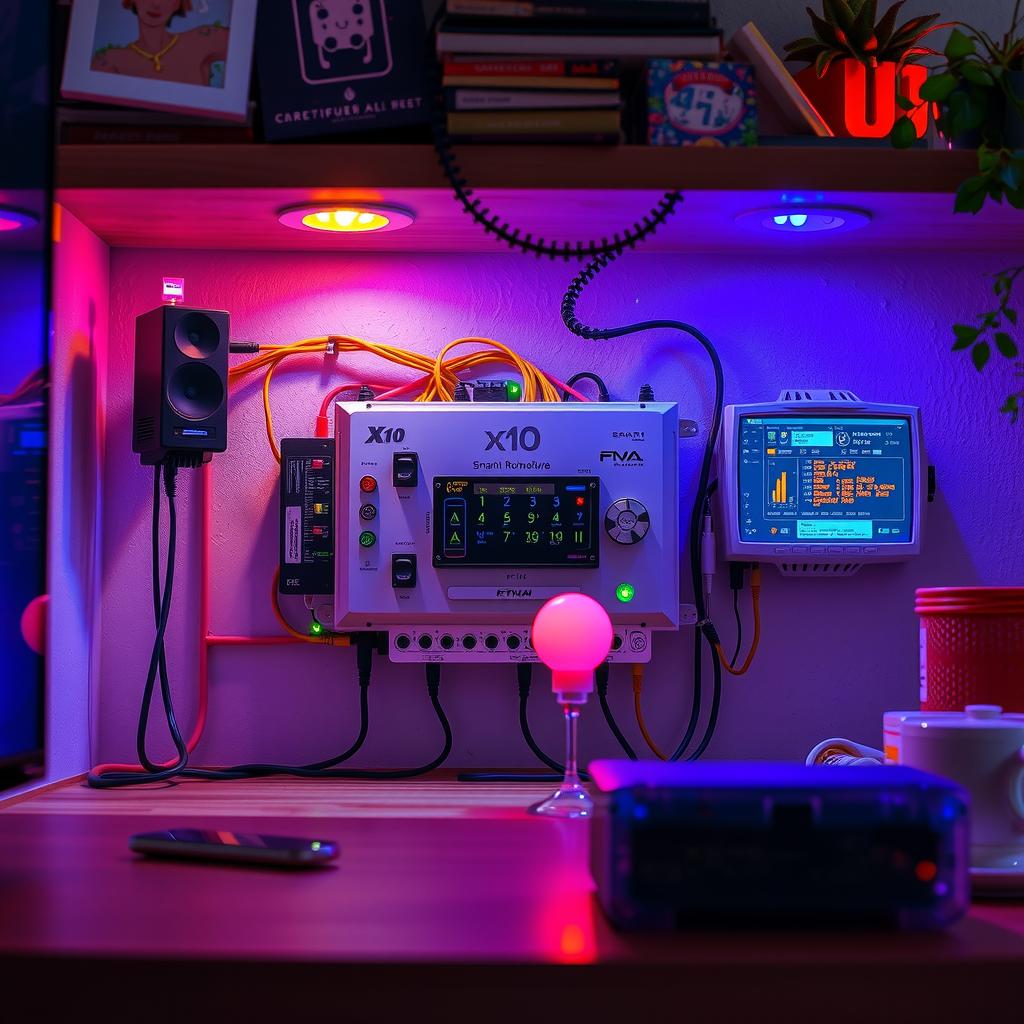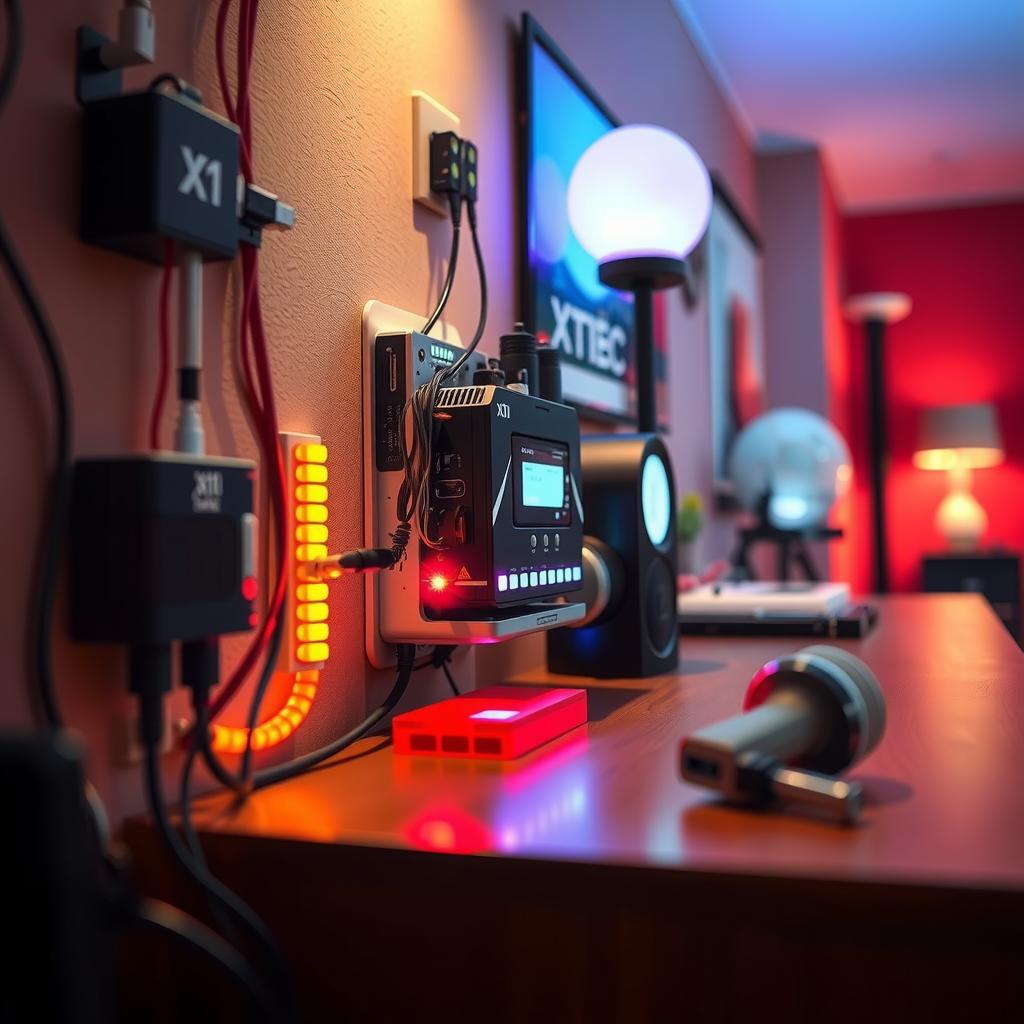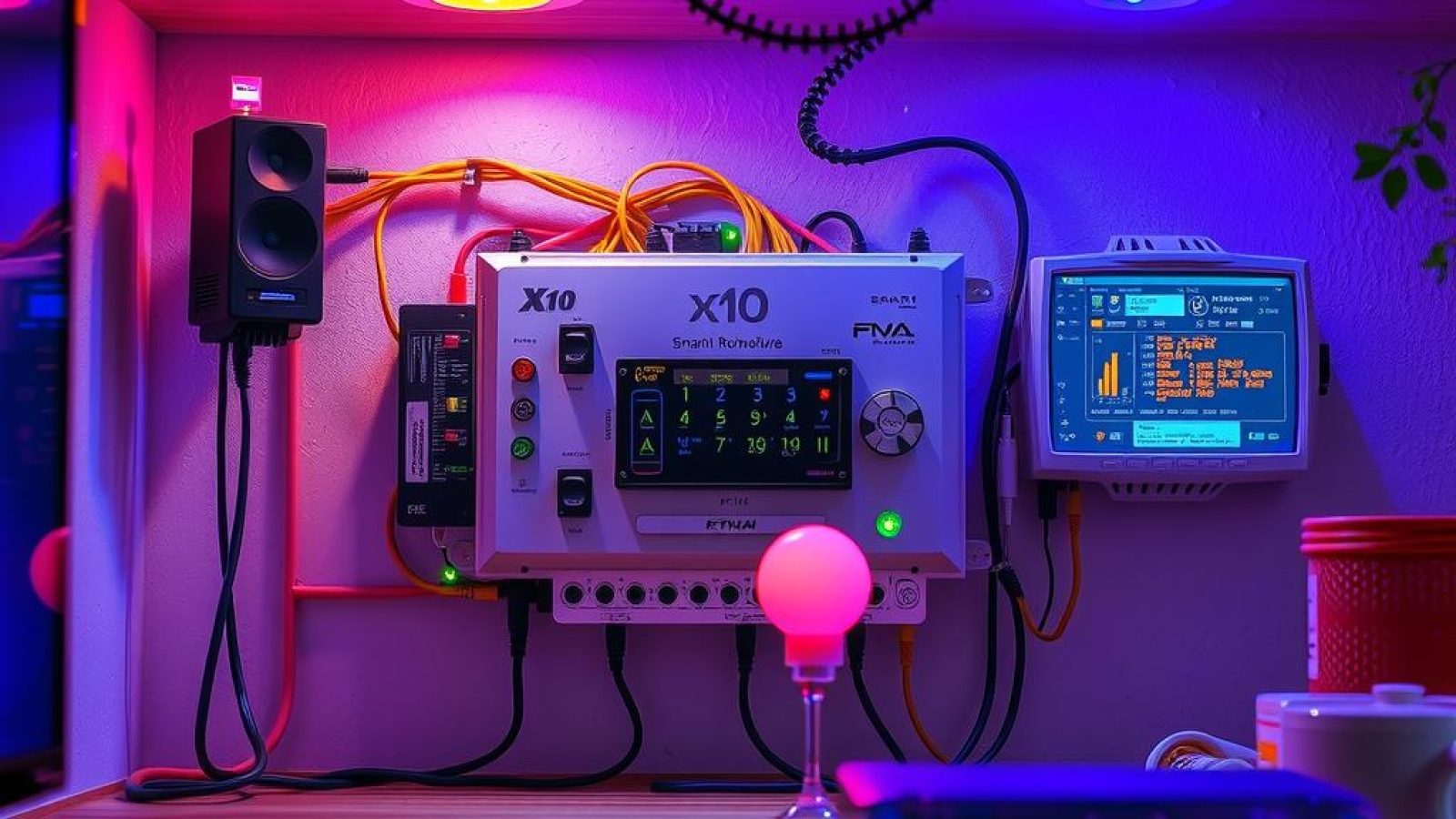In an era where smart homes are becoming the norm, many homeowners find themselves at a crossroads: what to do with their X10 devices? These legacy technologies have served faithfully for years, yet as modern smart systems evolve and expand their capabilities, integrating these old devices into contemporary home automation frameworks appears daunting. The question looms—how can one bring the benefits of X10 compatibility into today’s advanced connectivity solutions without sacrificing functionality or convenience?
As technology races ahead, it is easy to forget about older systems like X10, which laid the groundwork for home automation decades ago. Many individuals still rely on these time-tested products for basic tasks such as lighting control and appliance management. However, in a landscape dominated by sleek interfaces and intuitive mobile applications, how can these outdated tools remain relevant? The core value of this article lies in exploring practical methods to bridge the gap between vintage X10 devices and cutting-edge smart home ecosystems.
Homeowners may feel overwhelmed by the rapid advancements in modern technology; however, there exists a multitude of strategies that enable seamless device integration without needing a complete overhaul of existing setups. By understanding how to leverage existing infrastructure while incorporating new innovations, individuals can create cohesive environments that honor both past investments and future aspirations.
This blog post will delve deeply into various approaches that facilitate smooth connections between old X10 hardware and contemporary smart systems. From utilizing specialized hubs designed for legacy technology connectivity to employing innovative software solutions that enhance interoperability among diverse brands—readers will discover actionable insights tailored specifically for them.
As we navigate through this guide on connecting aging X10 devices with current smart home trends, readers will gain not only knowledge about available options but also inspiration for reimagining their living spaces as fully integrated environments. Join us as we uncover exciting possibilities that breathe new life into long-standing gadgets while embracing all that modern home automation has to offer!

Key Insights:
-
Embracing Legacy Technology: Understanding the value of integrating old devices
Integrating vintage devices like those powered by X10 into a modern smart home setup can bring nostalgia and functionality together. Many homeowners possess cherished items that, while outdated, still hold sentimental value. Recognizing this emotional connection is crucial for exploring how these legacy technologies can complement contemporary systems. -
Utilizing Smart Hubs for Connectivity Solutions: Centralized control for seamless integration
A practical approach to achieving X10 compatibility lies in using smart hubs that serve as central control points within a home automation system. These hubs simplify the process of connecting older appliances with new technology, ensuring that even vintage gadgets can operate alongside state-of-the-art smart systems. This not only enhances convenience but also preserves the unique charm of each device. -
Innovative Adapters and Plugins: Modern solutions for retro challenges
Advancements in modern technology have introduced various adapters and plugins designed specifically to facilitate device integration between old devices and new frameworks. By employing these innovative tools, users can breathe new life into their beloved X10 appliances, making it possible to enjoy all the benefits offered by today’s sophisticated automation features without compromising on style or history.

The Transformation of Living Spaces
Understanding the Shift Towards Smart Home Innovations
The advent of smart home technology has significantly transformed traditional living spaces, creating an environment where convenience and efficiency reign supreme. Home automation systems, such as X10, have emerged as pivotal players in this transformation, allowing homeowners to integrate various devices seamlessly into one cohesive network. This shift not only enhances daily life through improved connectivity but also raises questions about compatibility with legacy technology. Many homeowners are finding themselves at a crossroads; while they seek the benefits that modern technology offers—such as remote control of lighting, security systems, and climate management—they often grapple with the limitations posed by older devices that lack integration capabilities. As smart systems proliferate in popularity, understanding how these innovations can coexist with existing infrastructure becomes essential for maintaining a functional and efficient home.
Bridging the Gap Between Old and New
Challenges Faced by Homeowners with Legacy Devices
As homeowners embrace smart home innovations like those offered by X10, they face significant challenges associated with integrating these advanced technologies into their existing setups filled with older appliances. One major hurdle is ensuring compatibility; many legacy devices were not designed to communicate within a connected ecosystem or may require additional components to function alongside newer gadgets effectively. For instance, traditional light switches may need retrofitting or replacement entirely to work harmoniously within a comprehensive home automation framework utilizing wireless protocols inherent in modern solutions like X10. Furthermore, some users encounter resistance from older heating or cooling units that lack any form of connectivity solution whatsoever—creating frustrations when trying to implement energy-efficient practices promoted by contemporary smart technologies.
In addition to technical challenges, there exists an emotional aspect tied closely to changing one’s living environment fundamentally; many people hold nostalgic attachments toward their old devices which still serve basic functions adequately despite lacking sophistication compared to today’s offerings. However difficult this transition may seem initially—with potential costs involved in upgrading or replacing aging equipment—the long-term benefits promise greater control over household operations combined with enhanced energy savings through optimized usage patterns enabled by integrated systems like X10.
Ultimately bridging the gap between old and new requires careful planning on behalf of homeowners who wish for seamless device integration without sacrificing comfort or usability within their cherished homes—a balance achievable through informed choices centered around innovative products tailored towards providing exceptional performance across varying generations of technology.
Understanding X10 Compatibility
Bridging the Gap Between Vintage and Modern Technology
The X10 protocol is a cornerstone of home automation technology, particularly revered for its role in integrating old devices into modern smart systems. Originating in the 1970s, this technology allows electrical devices to communicate over existing power lines, creating a unique avenue for controlling various appliances within the home. The significance of X10 compatibility lies not only in its historical context but also in how it can breathe new life into vintage devices that might otherwise be left behind as society moves toward contemporary solutions. For enthusiasts of legacy technology, the appeal of utilizing X10 stems from its simplicity and effectiveness in establishing connectivity solutions across diverse environments.
Incorporating X10 into modern systems involves an understanding of both old and new technologies. Many homeowners are now looking to create cohesive smart homes where everything from lighting to heating can be controlled seamlessly through their smartphones or voice-activated assistants. By leveraging X10 compatibility, these older systems can find relevance alongside cutting-edge innovations like Wi-Fi-enabled thermostats or Bluetooth-connected security cameras. This integration process often requires bridging gaps between different communication protocols; however, many third-party adapters exist specifically designed to facilitate such interactions without sacrificing functionality.
Moreover, maintaining operational efficiency while incorporating vintage equipment poses certain challenges that savvy users must navigate. Devices originally designed with X10 capabilities may need updates or adjustments to ensure smooth operation within a modern framework. Fortunately, numerous resources are available for individuals looking to enhance their device integration experience—whether it’s by consulting user manuals or engaging with online communities dedicated to home automation discussions centered around techniques involving X10 products.
As more people become fascinated by smart home concepts fueled by convenience and energy efficiency, embracing technologies like X10 offers an exciting opportunity for innovation rooted in nostalgia. Homeowners who appreciate both tradition and progress can enjoy a beautifully synchronized environment where legacy tools operate harmoniously alongside state-of-the-art gadgets—all thanks to thoughtful implementation strategies focused on fostering seamless interconnectivity among various platforms.
In conclusion, understanding the dynamics at play when merging traditional tech with today’s advancements reveals immense possibilities lying ahead for enthusiasts ready to explore every facet offered by products such as X10. Embracing this hybrid approach unlocks potential benefits far beyond mere functionality; it cultivates deeper connections between past legacies while paving pathways toward future evolutions within automated living spaces.
Embracing Nostalgia through Smart Integration
Bridging the Gap Between Legacy and Modern Technology
In today’s fast-paced world, the integration of legacy technology with modern smart home systems has become essential for enhancing user experience while retaining a sense of nostalgia. The X10 system stands as a testament to this evolution, allowing homeowners to incorporate older devices into contemporary environments seamlessly. By utilizing innovative adapters and smart hubs, users can breathe new life into their cherished gadgets without sacrificing convenience or charm. As these solutions proliferate in the market, they promise not only improved functionality but also an emotional connection that many seek when transitioning from traditional setups to intelligent ecosystems. For instance, integrating a vintage lamp wired with X10 technology allows it to be controlled remotely via smartphone apps or voice commands while preserving its aesthetic appeal—an embodiment of heritage meeting innovation.
Practical Connectivity Solutions
Enhancing Home Automation with Thoughtful Integration
To truly appreciate how X10 devices can reinvigorate old technologies within modern frameworks, one must delve into practical connectivity solutions offered by today’s advanced smart systems. These systems facilitate effortless communication between various devices regardless of age or original design purpose. Adapters specifically designed for compatibility enable older appliances like ceiling fans or heating units equipped with X10 capabilities to interact fluidly with cutting-edge smart hubs such as Google Nest or Amazon Echo. Homeowners can create routines where lights dim automatically at sunset alongside classic radios playing nostalgic tunes—all orchestrated through intuitive interfaces that demand little from users yet deliver immense satisfaction in return.
The Allure of Retro Devices in Modern Spaces
Cultivating Charm through Intelligent Design
The charm associated with retro devices is undeniable; they evoke memories and sentiments often lost in today’s sterile tech landscape dominated by uniformity and standardization. Integrating these beloved items using platforms like X10, which allow for seamless automation without losing their distinct character, provides an appealing alternative that resonates emotionally with consumers seeking uniqueness within their homes. For example, imagine setting up an entire room filled with retro décor—from rotary phones enhanced by wireless adaptors enabling hands-free calling—to decorative lamps integrated using compatible modules connected back to central smart management systems ensuring optimal energy efficiency while maintaining visual integrity throughout living spaces. This balanced approach cultivates an environment rich in personal history whilst embracing advancements that make life simpler—a true marriage of nostalgia and innovation reflected beautifully across each corner inhabited by thoughtful design choices rooted deeply within both past experiences and future aspirations.
Frequently Asked Questions:
Q: How can I connect my old X10 devices to a modern smart home system?
A: To integrate your vintage X10 devices into a contemporary smart home setup, consider using smart hubs specifically designed for such compatibility. These hubs facilitate communication between legacy technologies and current systems, allowing you to control your older appliances alongside newer gadgets seamlessly.
Q: Will integrating X10 products into my modern technology affect their performance?
A: When properly integrated through suitable connectivity solutions, the performance of your X10 products should remain intact while benefiting from enhanced functionality offered by modern technology. This means you can enjoy the charm of your old devices without compromising efficiency in home automation.
Q: Are there specific adapters available that support X10 compatibility for new smart systems?
A: Yes, there are innovative adapters and plugins on the market designed for X10 compatibility that enable outdated appliances to join a cohesive smart ecosystem. By using these solutions, homeowners can revive their cherished old devices while enjoying all the conveniences provided by today’s advanced smart systems.

Add a Comment